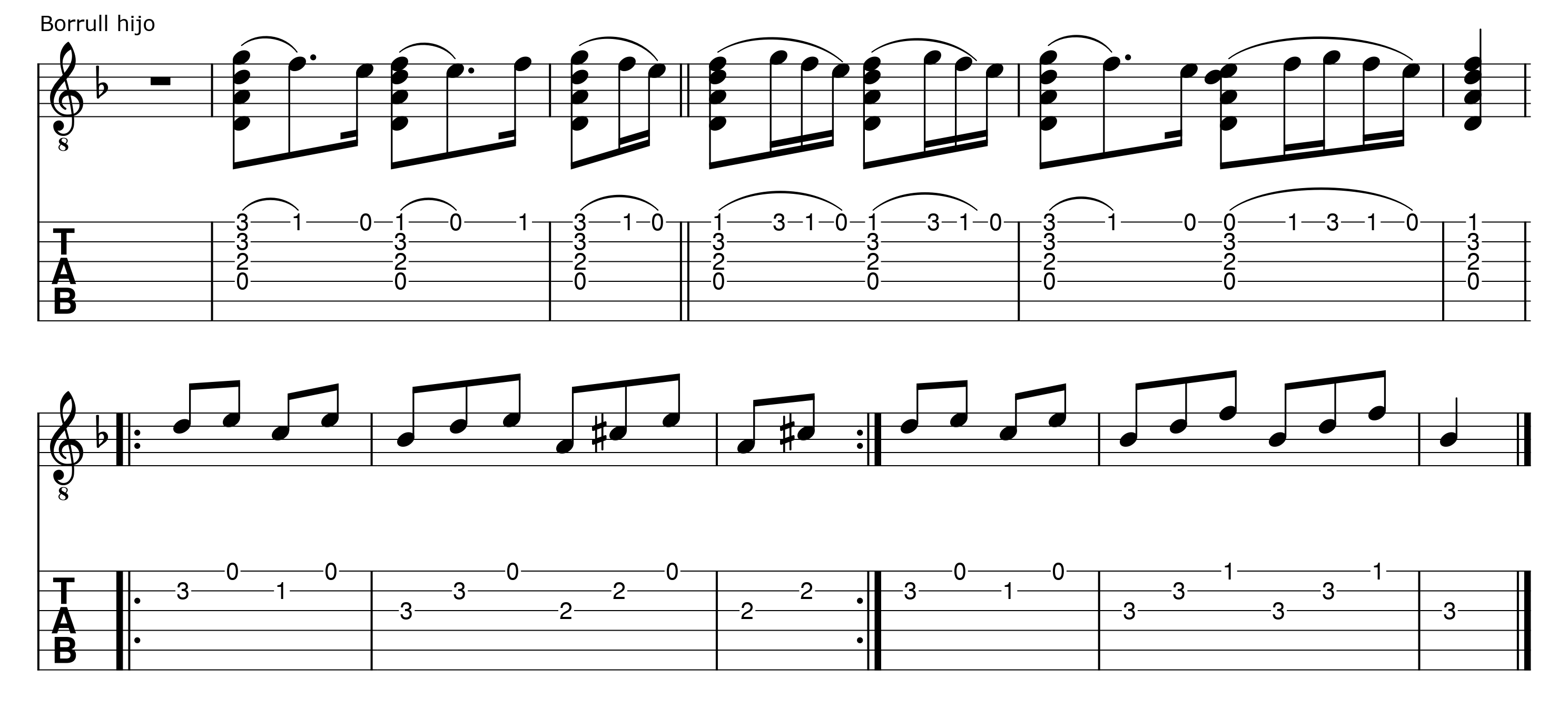
The scores below were written in a three-part time signature of 2/4, 6/8 and 1/4 and with double bar lines between the five-beat compases of the siguiriya. Click here for more information on the siguiriyas rhythm and this system of notation.
Here are three versions of an old falseta recorded by Miguel Borrull hijo, Ramón Montoya and Manolo de Badajoz. Other versions were recorded by Juan Gandulla in 1909, Antonio Moreno in 1933, Ricardo and others.
The falseta starts with a two-count rest, beginning on the first "long" beat of the siguiriyas compás. This chording is nearly always used to introduce the rest of the falseta. This first version is very basic and is the simplest of the three presented here. You can finish with a series of slurs as seen in Ramón Montoya's version below (Borrull's ending for this goes out of time). Capo at second fret.

Ramón begins with the chording seen in the other two falsetas. Instead of eighth notes, Ramón plays the main idea of the falseta in triplets, which adds to the flow. Notice the Dmin9 arpeggio at the end of the second complete compás and the dissonant open fourth string toward the end of the third compás. Incomprehensibly, very few guitarists recorded this classic move with this dissonance (an E at the second fret is much more common). The triplet slur starting the fourth compás was also a common move for old-school guitarists such as Ramón, Juan Gandulla and Perico del Lunar. It may seem strange today, as the triplets detract from the dynamic context, but it should be remembered that the tempos of rhythmic styles have slowed considerably over the years. Capo at sixth fret.
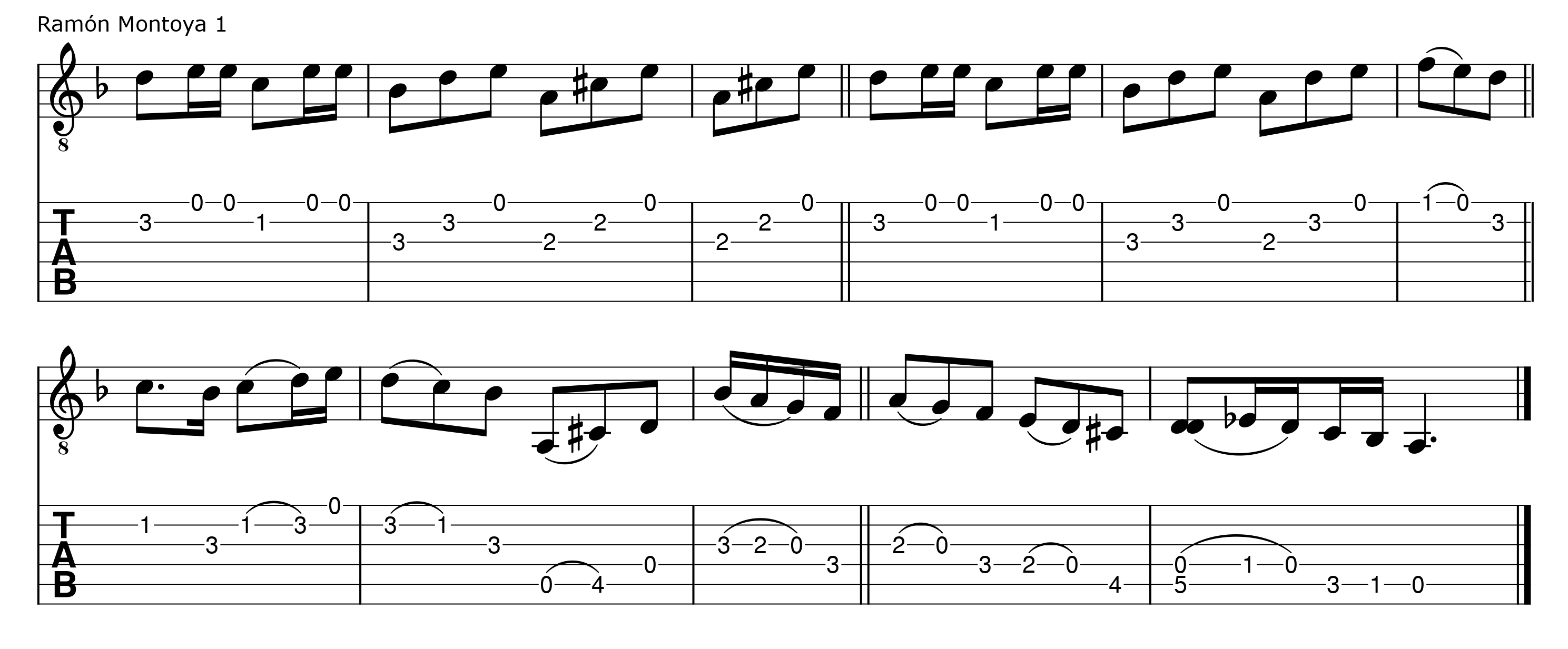
Manuel Álvarez Soruve (or Sorubet, born in 1889 or 1892, according to different sources) had a great sense of rhythm and a lightning-fast thumb. He absorbed the work of Montoya, Ricardo and others, to which he applied his outstanding musicianship and excellent faculties. He recorded this falseta in 1928 and 1930 with Mazaco, and the version below shows the full development of the idea. He concludes with his version of a Ricardo falseta, and the golpe (tap) at the end of the last measure suggests that he played a thumbed downstroke. In his recordings with Niño Gloria, he plays this falseta with scorching intensity. Capo at sixth fret.
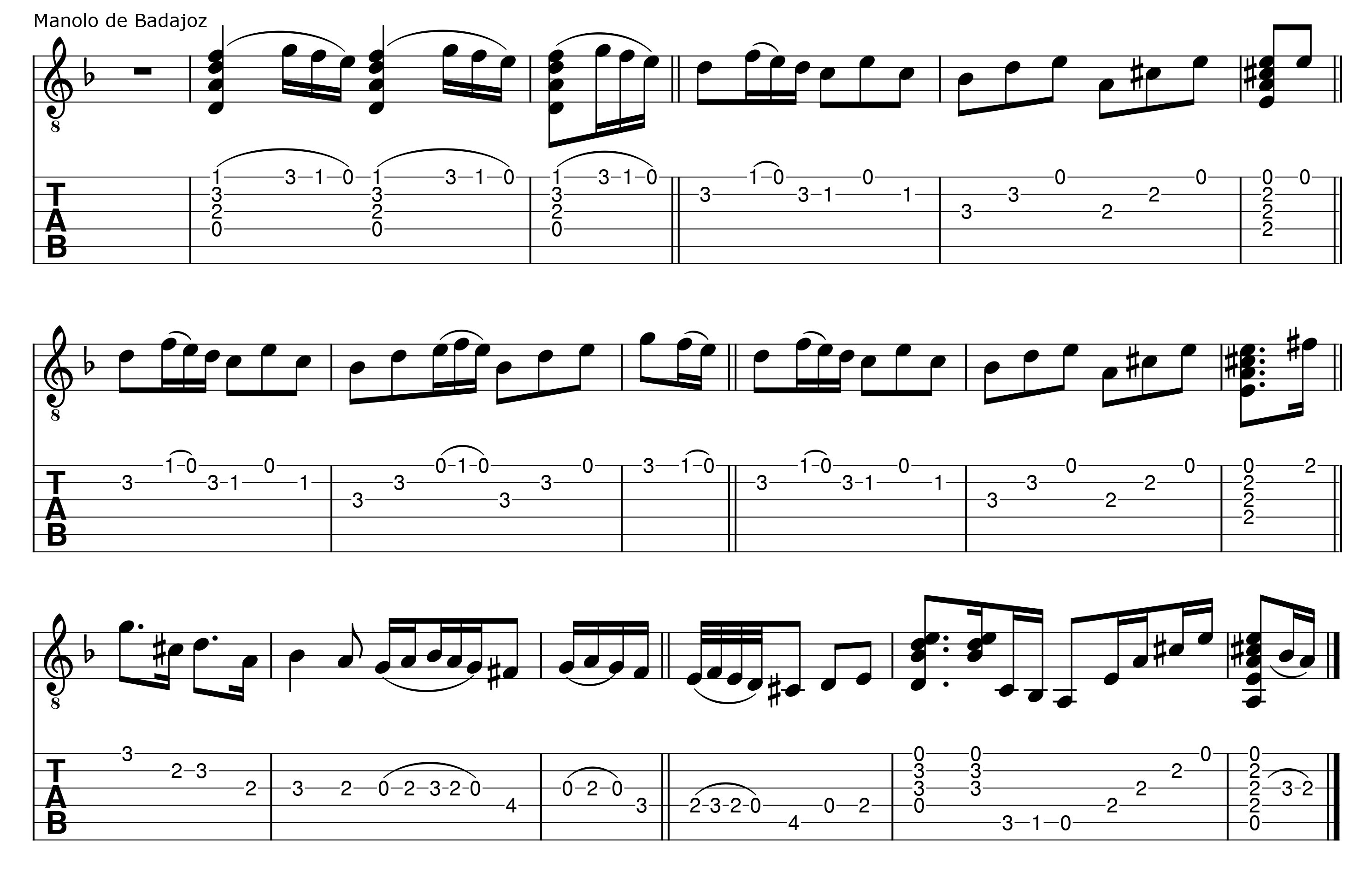
Recorded in 1931 with Manuel Torre. As seen in the video series "Rito y Geografía del Toque," Diego de El Gastor played a version of this falseta in sixteenth notes. The D minor and A7 inversions generate chromatic movement (one fret of difference). In the first part, the fourth and fifth strings are played just before each chord change. Notice the left-hand slide at the end of the eighth complete compás. This is just one of the details that reveal Javier's smooth and intelligent left-hand fingering. Nearly the whole falseta is played with just the thumb. Capo at third fret.
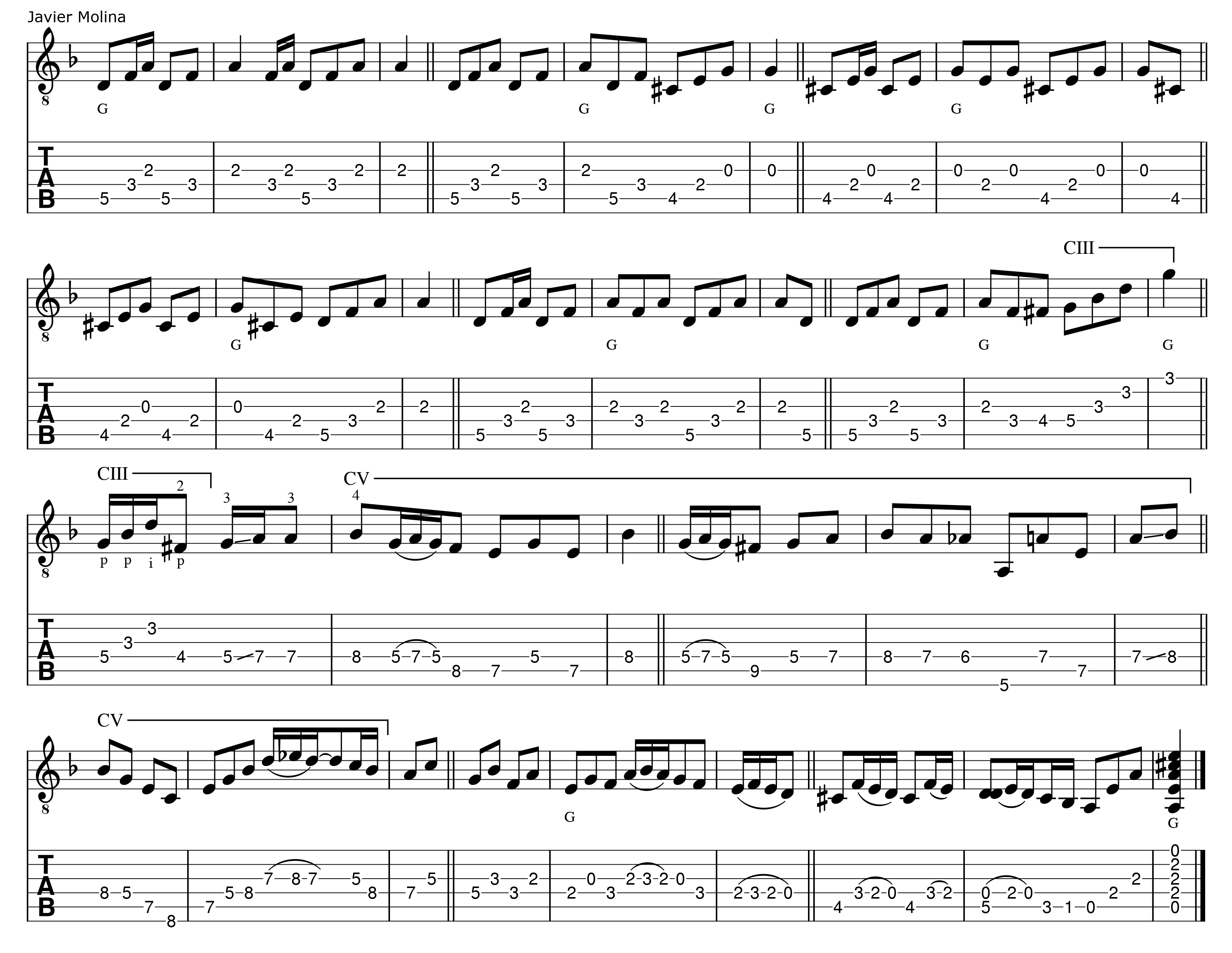
This falseta appears at the beginning of a recording from 1928 with Juan Mojama ("Tanto he dormido," Gramófono AE-2499), and is heard from some of today's players. The structure of this falseta and Ramón's interpretation of it are just one example of his consummate musicianship. Imagine what this must have sounded like in 1928! The repetition and rephrasing of ideas create an extraordinarily rich arrangement, producing a surprising amount of music with simple slurs on a C chord. The D minor and rest at the start of the second compás contrast with the F octave and sustain at the start of the third compás. The sixth and seventh compases are identical, but he goes on to play variations, with a B flat implying C7 in the the eighth compás and, in the ninth compás, an oddly timed cierre that leads straight into the conclusion. Capo at fifth fret (numbers indicate whole compases).
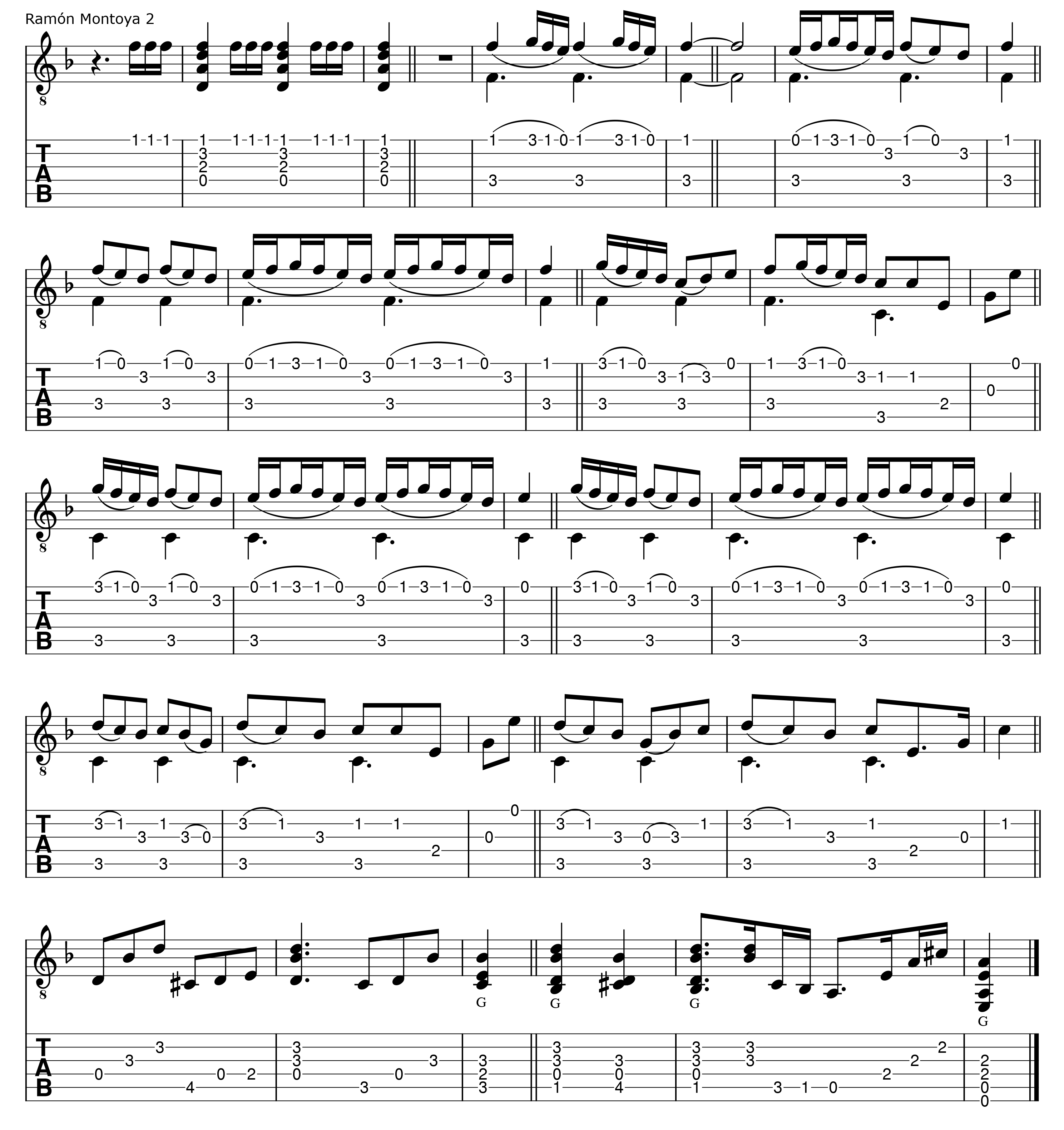
Not much seems to be known about this guitarist. He apparently played at the Concurso de Cante Jondo in Granada in 1922 and recorded with Manuel Torre and Tenazas de Morón in a series of promotional recordings that took advantage of the popularity of the contest. The fingering and the music of this falseta are representative of others that have been recorded by many guitarists over the years. Capo at seventh fret (por arriba).

Paco de Lucía recorded this in 1973 as part of Camarón's siguiriya "Hermanito mío." Into the first and fourth beats, he plays an upstroke with his thumb to repeat the figures on the second and third strings. Capo at sixth fret.

This is a combination of common ideas heard from many guitarists.

This was inspired by the work of Sabicas, although I've given a twist to the harmony. At the end of the first compás, fret with your middle finger and slide up two frets, as indicated.

Here's another odd-sounding falseta inspired by Sabicas. The cierre is based on the playing of Manuel Morao. Although it sounds strange, the D-sharp at the fourth beat is not especially exotic for siguiriyas. Capo at third fret.
